How to Use a Meat Thermometer
Cooking meat to the perfect temperature is essential for both safety and flavor. A meat thermometer is an indispensable tool in achieving this precision. Whether you’re grilling, roasting, or smoking, knowing how to use a meat thermometer correctly can elevate your culinary skills and ensure delicious results every time. In this guide, we’ll explore how to use a meat thermometer, the best placement for chicken and turkey, and provide an in-depth comparison of top meat thermometers available in the UK.
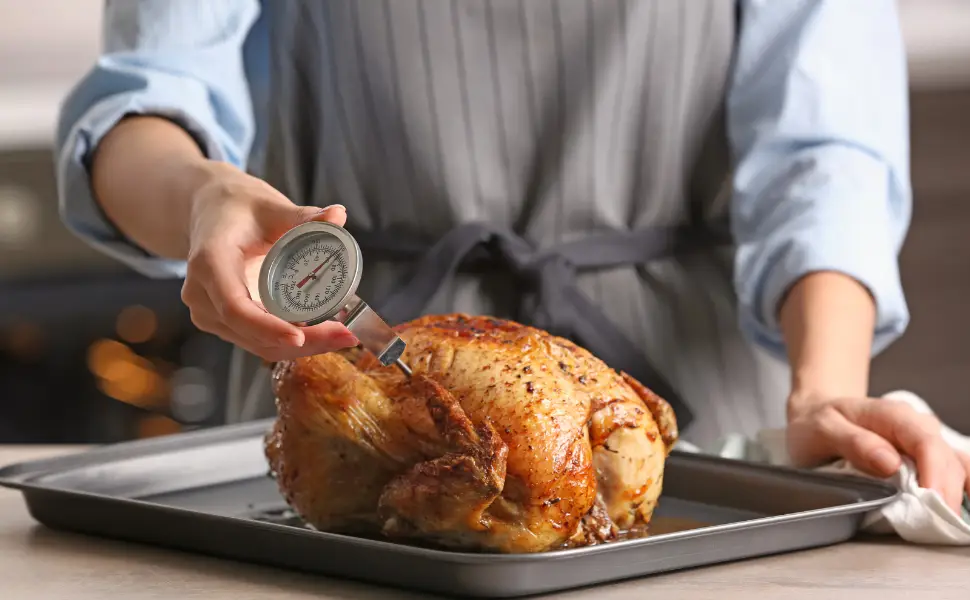
How to Use a Meat Thermometer in Uk
Using a meat thermometer is straightforward, but mastering its use can significantly improve your cooking outcomes. Here’s a step-by-step guide:
- Choose the Right Thermometer
-
- Instant-Read Thermometers: Provide quick temperature readings, ideal for quick checks.
- Leave-In Thermometers: Designed to stay in the meat while it cooks, perfect for large roasts or whole poultry.
- Calibrate Your Thermometer
-
- Ensure accuracy by calibrating your thermometer before use. Most digital thermometers have a calibration feature, while analog models may require manual adjustment.
- Insert the Thermometer Correctly
-
- Whole Cuts of Meat: Insert the thermometer into the thickest part of the meat, avoiding bones, fat, or gristle.
- Ground Meat: Insert the thermometer into the center to ensure it’s fully cooked.
- Monitor the Temperature
-
- For instant-read thermometers, wait until the reading stabilizes.
- For leave-in thermometers, use the display or connected app to monitor the temperature remotely.
- Check for Doneness
-
- Refer to a meat temperature chart to determine the safe internal temperatures for different types of meat e.g., chicken should reach 165°F or 74°C.
- Clean the Thermometer
-
- Always clean your meat thermometer after use to prevent cross-contamination. Most probes are dishwasher-safe or can be washed with warm, soapy water.
Where to Put Meat Thermometer in Chicken
Ensuring your chicken is cooked to the right temperature is crucial for both safety and taste. Here’s how to properly place a meat thermometer in a whole chicken:
- Thigh Area
-
- The best spot is the thickest part of the thigh, avoiding the bone. This area takes the longest to cook, ensuring it reaches the safe internal temperature of 165°F (74°C).
- Breast Area
-
- For larger chickens, you can also check the temperature in the thickest part of the breast. However, the thigh is more reliable as it cooks slower.
- Avoid Bones and Fat
-
- Inserting the thermometer near bones or fatty areas can give inaccurate readings, as these parts heat up differently.
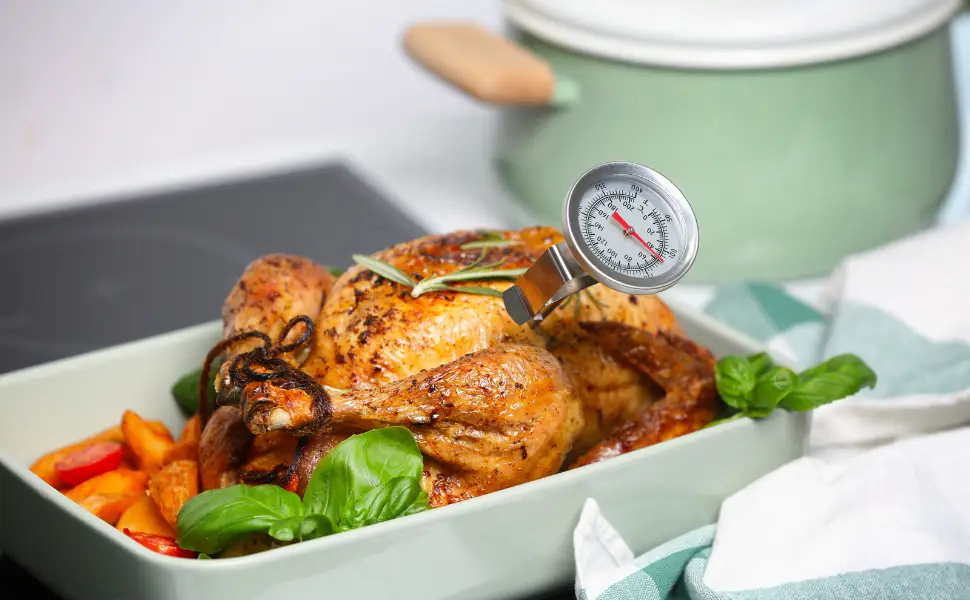
Where to Put a Meat Thermometer in a Turkey
Roasting a turkey requires precision to achieve that juicy, tender result we all love. Here’s the proper placement for a meat thermometer in a whole turkey
- Thigh Cavity
-
- Insert the thermometer into the thickest part of the thigh, avoiding the bone. This area is the last to reach the desired temperature, making it the most reliable indicator of doneness (165°F or 74°C).
- Breast Cavity
-
- For larger turkeys, also check the temperature in the thickest part of the breast. This helps ensure the white meat is perfectly cooked without overcooking the dark meat.
- Avoid Bones and Joints
-
- Similar to chicken, avoid placing the thermometer near bones or joints as they conduct heat differently, leading to inaccurate readings.
Detailed Comparison of Top Meat Thermometers in the UK
Choosing the right meat thermometer can make a significant difference in your cooking. Here’s a detailed comparison of some of the top meat thermometers available in the UK, highlighting their pros and cons to help you make an informed decision.
1. Meater Plus Thermometer
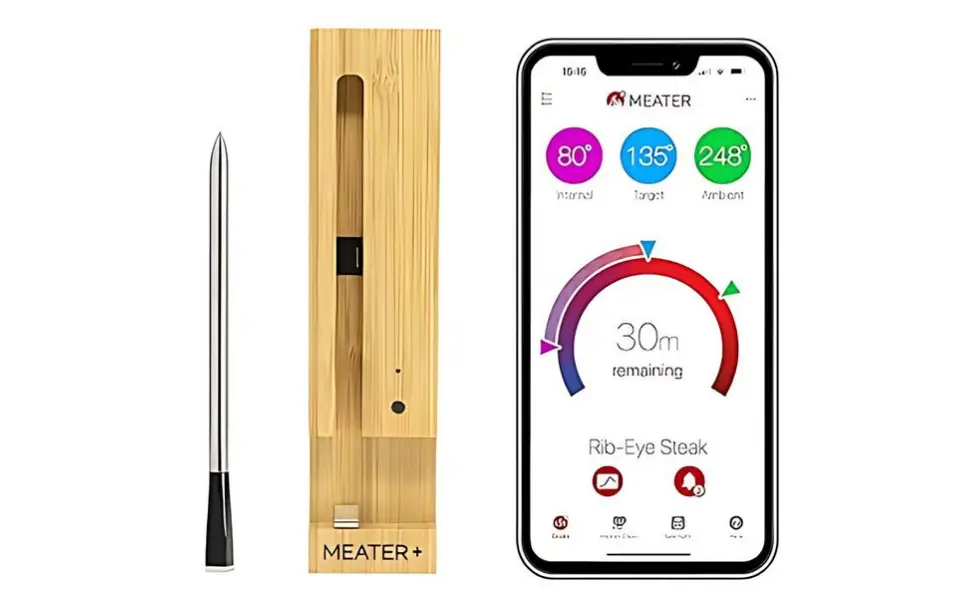
Pros
- Wireless Freedom: Completely wire-free design allows for easy movement around the kitchen or BBQ area without tangled cords.
- Long Range Connectivity: Bluetooth 5 provides a range of up to 50m indoors, ensuring you can monitor your cooking from a distance.
- Dual Sensors: Monitors both internal meat temperature and ambient temperature simultaneously for comprehensive cooking insights.
- App Integration: Compatible with iOS and Android devices via a free app, providing real-time updates and notifications.
- Dishwasher Safe: Easy to clean, making maintenance hassle-free.
Cons
- Requires Smartphone: Full functionality depends on having a compatible smartphone or tablet, which is not included in the package.
- Higher Price Point: More expensive compared to basic meat thermometers, which might not suit all budgets.
2. Doqaus Wireless Meat Thermometer
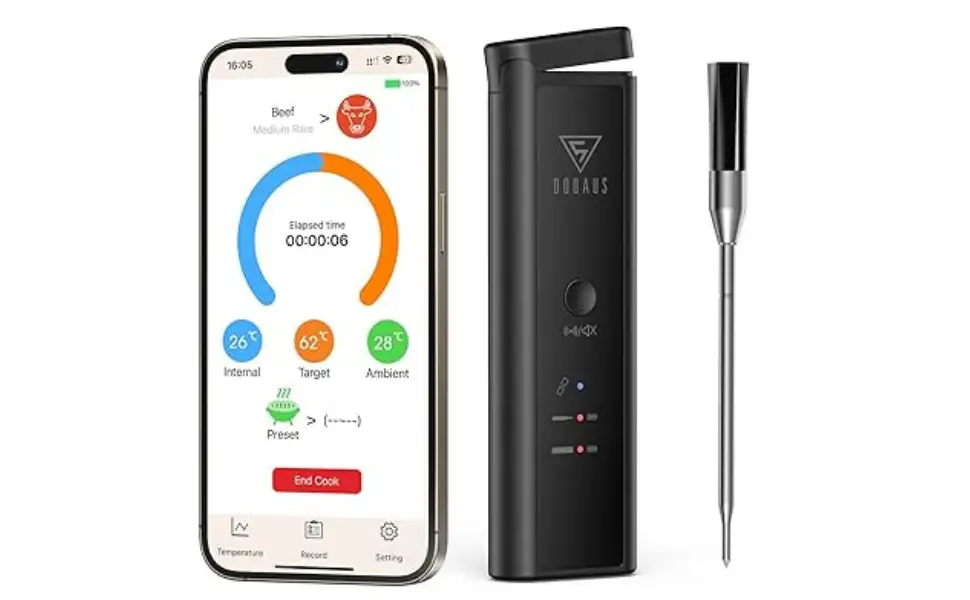
Pros
- Extended Range: 158m Bluetooth range allows for enhanced mobility during cooking, ideal for large outdoor setups.
- High Accuracy: Dual temperature sensors provide precise readings with +/-1 degree accuracy.
- Smart App Features: Pre-programmed functions for different meats, temperature alerts, and progress tracking via the Temprobe App.
- Rechargeable and Waterproof: 650mAh battery offers 48 hours of use, and the IPX7 waterproof probe is easy to clean.
- Magnetic Back: Easily attaches to grills or smokers for convenient placement.
Cons
- App Complexity: The user interface may be overwhelming for beginners unfamiliar with smart devices.
- Connectivity Issues: Some users report occasional Bluetooth connectivity problems, especially in environments with multiple wireless devices.
3. Salter Meat Thermometer

Pros
- Instant Read: Provides rapid temperature readings within seconds, ideal for quick checks.
- High Precision: 0.1°C accuracy ensures precise measurements, crucial for perfect cooking.
- Wide Temperature Range: Measures from -45°C to 200°C, suitable for a variety of cooking methods.
- Affordable: Low-cost without losing important features.
- Ready to Use: Comes with batteries included, allowing immediate use out of the box.
Cons
- Basic Features: Lacks wireless connectivity and advanced features found in higher-end models.
- Manual Operation: Requires frequent checking, which can be inconvenient for some users during long cooking processes.
4. Cirycase Meat Thermometers

Pros
- Dual Probe Design: One built-in probe and an external 102cm wire probe allow for monitoring multiple parts of the meat simultaneously.
- High Accuracy: Measures temperatures within 1°C/2°F accuracy and a wide range from -50°C to 300°C.
- Instant Read: Provides temperature readings in 2-3 seconds for quick decision-making.
- Temperature Alarm: Alerts you when the desired temperature is reached, preventing overcooking.
- User-Friendly: Large backlit LCD display and ergonomic handle enhance usability.
Cons
- Wired Design: The external probe’s wire can be cumbersome, especially in tight cooking spaces or outdoor settings.
- Bulkier Size: Slightly larger compared to other compact models, which may affect storage and portability.
5. Digital Meat Thermometers
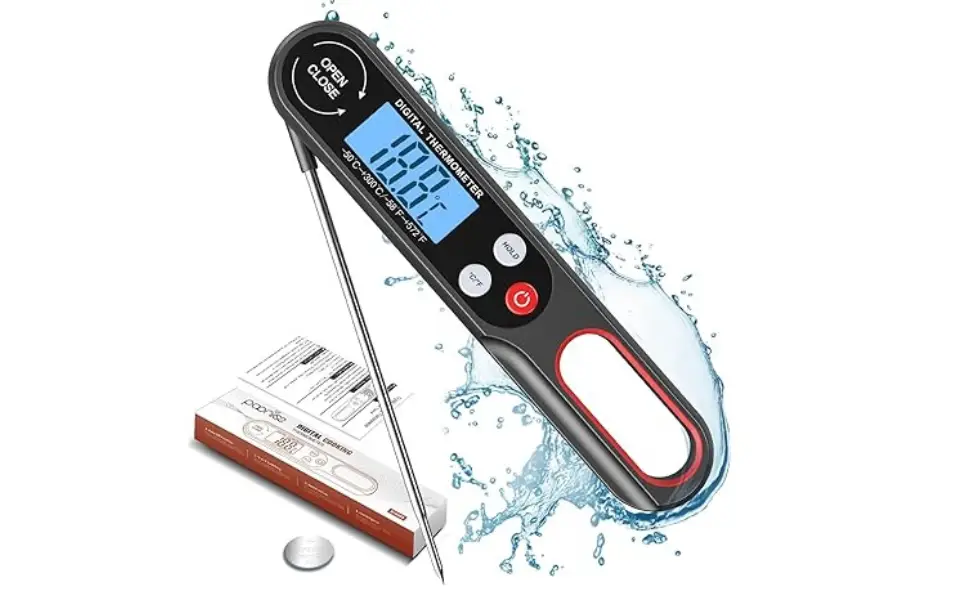
Pros
- Fast and Accurate: Provides temperature readings within 2-3 seconds with ±1°C accuracy.
- Large LCD Screen: Easy-to-read display with backlight for visibility in any lighting condition.
- Foldable Probe: Long, foldable probe allows for easy storage and handling in tight spaces.
- Magnetic Back: Attaches to metal surfaces for convenient storage and quick access.
- Power-Saving: Auto shut-off function extends battery life, reducing the need for frequent replacements.
Cons
- Limited Features: Lacks advanced functionalities like wireless connectivity and app integration.
- Durability Concerns: May not be as robust as higher-end models, potentially affecting longevity.
Conclusion
Selecting the right meat thermometer can transform your cooking experience, ensuring that your meats are cooked to perfection every time. Whether you prefer the wireless convenience of the MEATER Plus, the extended range and high accuracy of the DOQAUS Wireless Meat Thermometer, the affordability of the Salter Meat Thermometer, the dual monitoring capabilities of the CIRYCASE Meat Thermometers, or the simplicity of the Digital Meat Thermometer, there’s a perfect option for every cooking style and budget.
Affiliate Disclosure
This post contains affiliate links. If you purchase through these links, we may earn a small commission at no extra cost to you. This helps us continue to provide quality content. Thank you for your support!
